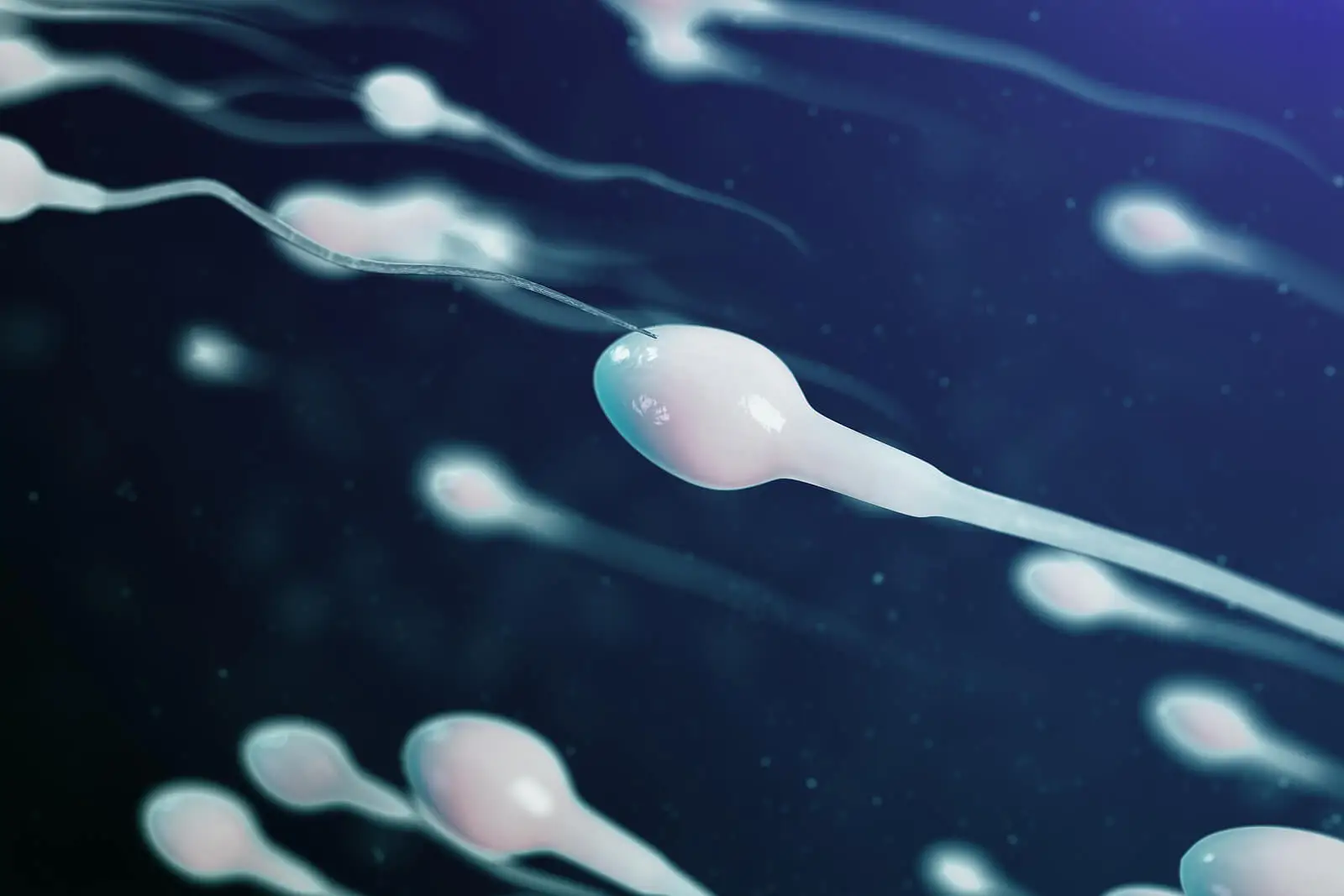Can You Get Pregnant with Pre-Seminal Fluid?


Written and verified by the doctor Mariel Mendoza
Pre-seminal fluid is a viscous, liquid, colorless fluid that’s produced in men before ejaculation. It’s expelled through the urethra, like semen and urine, and is visible at the tip of the penis when a man is highly aroused. Many people have wondered whether it’s possible to get pregnant with pre-seminal fluid, and that’s what we’ll look at today.
In composition, pre-seminal fluid is similar to semen. It’s produced before ejaculation because it has many functions. However, did you know that it can transmit infections and cause pregnancy? We’ll explain why.
What is pre-seminal fluid?
It’s also known as pre-ejaculatory fluid, pre-ejaculate, or Cowper’s fluid. It’s produced primarily by Cowper’s glands or bulbourethral glands, which are located at the root of the penis, with some help from Littre’s glands, which are part of the urethral tissue.
The composition is similar to semen, produced by the testes and released during ejaculation. They share alkaline phosphatase, but differ fundamentally in that pre-ejcaulate doesn’t contain sperm.
This fluid is released through the urethra when the man is aroused, with the function of enhancing sexual activity and facilitating reproduction. Its release is prior to ejaculation, as one of its names implies.
The amount of fluid produced depends on the individual man. In some cases, no pre-ejaculatory fluid is produced at all, while in others it can be up to 5 milliliters.

Learn more about the topic here: How a Man’s Diet Impacts His Quality of Sperm
What are the functions of this fluid?
Being a viscous fluid, pre-seminal fluid is the lubricant for men during intercourse, acting similarly to the vaginal mucus produced by women. On the other hand, it also lubricates the walls of the urethra, facilitating the flow of semen which is much more viscous.
On the other hand, it facilitates the survival of spermatozoa, because it neutralizes the residual acid of urine residues and improves the pH of the vagina. By modifying the vaginal environment it promotes sperm survival.
Discover more here: How Long Does It Take to Get Pregnant After Sex?
If it doesn’t contain sperm, how can pre-seminal fluid cause pregnancy?
Pre-seminal fluid can cause pregnancy, although the chances of this happening are very low. It doesn’t normally contain sperm, but it can have sperm in it through “cross-contamination”.
Multiple studies have found that between 17% and 41% of the men involved had sperm in their pre-seminal fluid. This is why the method of coitus interruptus isn’t entirely recommended as a method of contraception, since the pre-ejaculate will most likely come into contact with the vagina.
Semen, urine, and pre-seminal fluid exit through the same conduit: the urethra. Therefore, the pre-ejaculate can become contaminated with some sperm that remians in the urethra, allowing an egg to be fertilized.
This occurs when there was a recent ejaculation of semen and no urine was passed afterward. Remnants of sperm remain in the urethra and are carried away by pre-seminal fluid.
In addition to this, simple unprotected genital contact with any sexual fluid, including pre-seminal fluid, is sufficient to transmit sexually transmitted infections, such as HIV, chlamydia or genital herpes.

Is it possible to decrease the chances of pregnancy from pre-seminal fluid?
It has been shown that pre-seminal fluid doesn’t contain sperm if there hasn’t been ejaculation for at least two days, and there has been urination. That’s why it’s recommended to urinate before having sex.
However, there’s a high risk of acquiring sexually transmitted infections because this fluid may contain bacteria, viruses, and other microorganisms. That’s why, because of these risks, the method of coitus interruptus is not a reliable contraceptive strategy.
It is advisable to use other contraceptive methods: barrier, mechanical or hormonal. The first ones to avoid sexually transmitted infections and unwanted pregnancies, and the latter only to avoid getting pregnant, either by semen or pre-seminal fluid.
All cited sources were thoroughly reviewed by our team to ensure their quality, reliability, currency, and validity. The bibliography of this article was considered reliable and of academic or scientific accuracy.
- Butler Tobah Y. Can you get pregnant from pre-ejaculation fluid? Mayo Clinic. 2020.
- Chughtai B, Sawas A, O’Malley RL, Naik RR, Ali Khan S, Pentyala S. A neglected gland: a review of Cowper’s gland. Int J Androl. 2005;28(2):74-77. Disponible en https://pubmed.ncbi.nlm.nih.gov/15811067/.
- Killick SR, Leary C, Trussell J, Guthrie KA. Sperm content of pre-ejaculatory fluid. Hum Fertil (Camb). 2011;14(1):48-52. Disponible en https://pubmed.ncbi.nlm.nih.gov/21155689/.
- Kovavisarach E, et. al. (2016). Presence of sperm in pre-ejaculatory fluid of healthy males. J Med Assoc Thai 2016;99. Disponible en https://pubmed.ncbi.nlm.nih.gov/27266214/.
- Vásquez F, Hérnandez F, Escobar A, Vásquez D, Orozco E, Vizcaíno I, et al. Determinación de la presencia o ausencia de espermatozoides en el líquido pre eyaculatorio. Universidad del Norte. 2017.
This text is provided for informational purposes only and does not replace consultation with a professional. If in doubt, consult your specialist.








